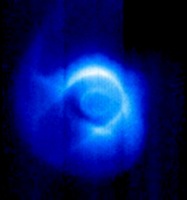Image
Etymology
Middle English, from Latin pictura, from pictus, past participle of pingere to paint
- Date: 15th century
Definitions
- 1 : a design or representation made by various means (as painting, drawing, or photography)
- 2 a : a description so vivid or graphic as to suggest a mental image or give an accurate idea of something <the book gives a detailed picture of what is happening>
- b : a mental image
- 3 : image, copy <he was the picture of his father> <she was the very picture of health>
- 4 a : a transitory visible image or reproduction
- b : [[Film|motion picture]
- c plural : movies
Description
An image (from Latin imago) is an artifact, for example a two-dimensional picture, that has a similar appearance to some subject—usually a physical object or a person.
Characteristics
Images may be two-dimensional, such as a photograph, screen display, and as well as a three-dimensional, such as a statue. They may be captured by optical devices—such as cameras, mirrors, lenses, telescopes, microscopes, etc. and natural objects and phenomena, such as the human eye or water surfaces.
The word image is also used in the broader sense of any two-dimensional figure such as a map, a graph, a pie chart, or an abstract painting. In this wider sense, images can also be rendered manually, such as by drawing, painting, carving, rendered automatically by printing or computer graphics technology, or developed by a combination of methods, especially in a pseudo-photograph.
A volatile image is one that exists only for a short period of time. This may be a reflection of an object by a mirror, a projection of a camera obscura, or a scene displayed on a cathode ray tube. A fixed image, also called a hard copy, is one that has been recorded on a material object, such as paper or textile by photography or digital processes.
A mental image exists in an individual's mind: something one remembers or imagines. The subject of an image need not be real; it may be an abstract concept, such as a graph, function, or "imaginary" entity. For example, Sigmund Freud claimed to have dreamed purely in aural-images of dialogs. The development of synthetic acoustic technologies and the creation of sound art have led to a consideration of the possibilities of a sound-image made up of irreducible phonic substance beyond linguistic or musicological analysis.
A still image is a single static image, as distinguished from a moving image. This phrase is used in photography, visual media and the computer industry to emphasize that one is not talking about movies, or in very precise or pedantic technical writing such as a standard.
